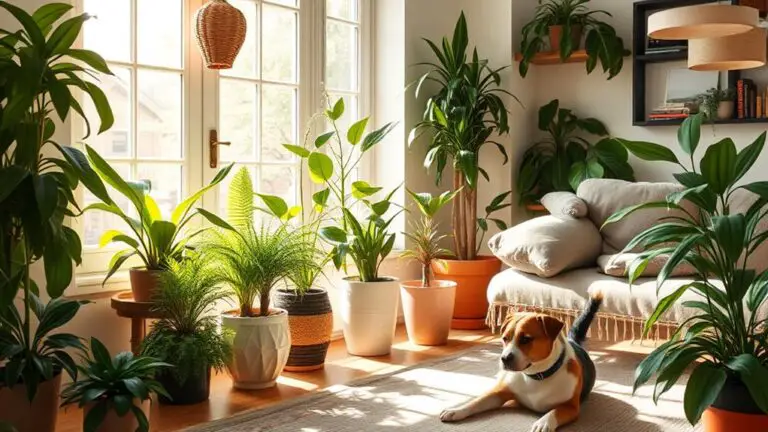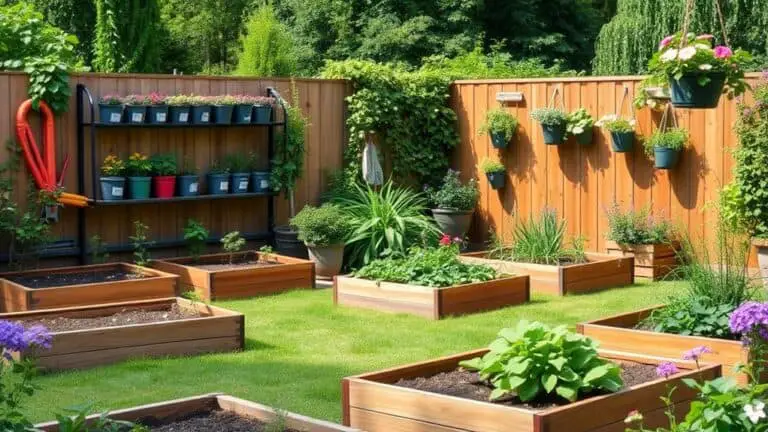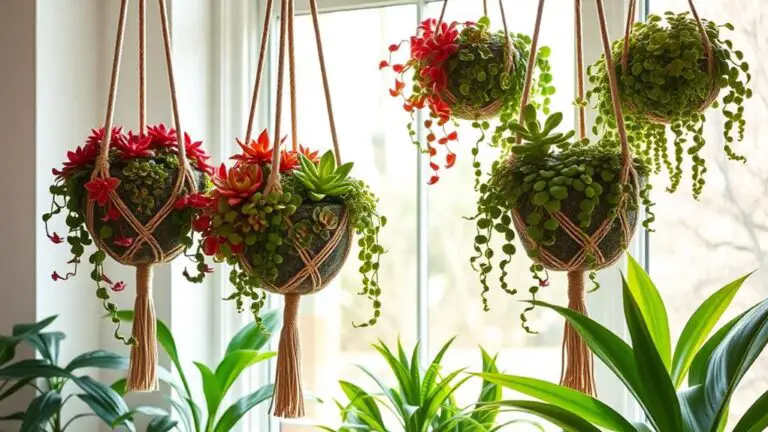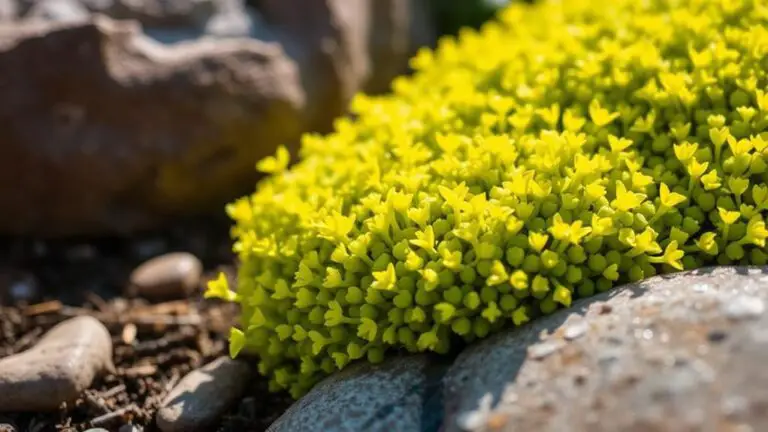Why Is My Haworthia Turning Brown?
Noticing your Haworthia turning brown can be concerning, and you might be wondering what's causing this change. It could stem from several issues, such as improper watering habits, environmental stress, or even pest problems. Overwatering often leads to root rot, while underwatering can make the leaves crispy. Environmental factors like too much direct sunlight or low humidity can also be culprits. There's more to uncover about these potential problems and how to address them, ensuring your plant returns to its vibrant self.
Watering Practices
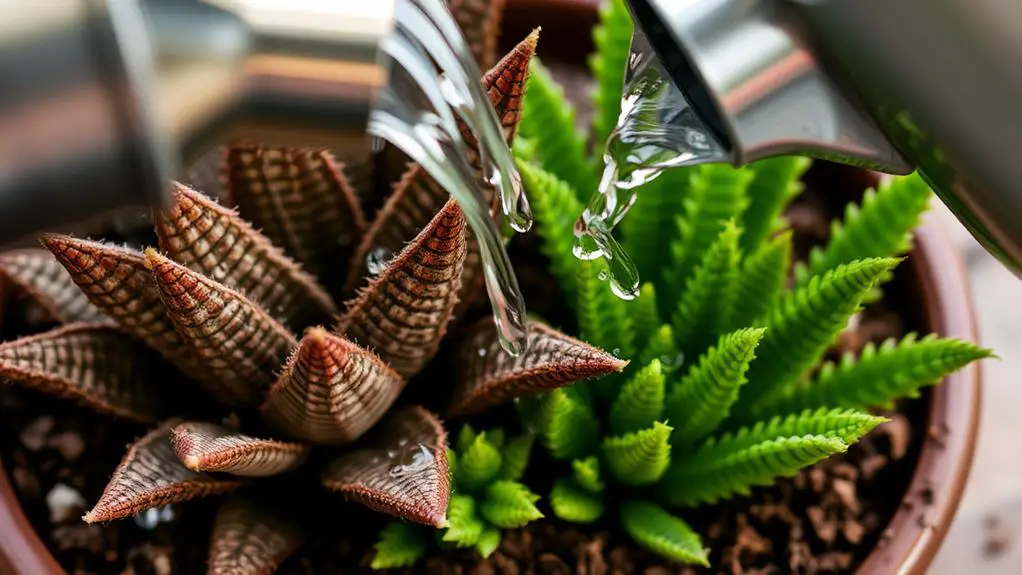
When it comes to watering practices for Haworthia, getting it right is vital to prevent browning leaves. To keep your plant healthy, make certain you allow the soil to dry out between waterings. Overwatering can lead to root rot, turning the leaves brown and mushy.
On the other hand, underwatering can cause dehydration, resulting in crispy, brown leaves. It's important to monitor soil moisture regularly. You can do this by inserting your finger 1-2 inches into the soil. If it feels dry, it's time to water.
During the active growing season in spring and summer, you may need to water more frequently. When you do water, be sure you do it thoroughly until excess water drains from the pot. However, avoid letting water stand in the saucer, as this can create waterlogged conditions.
Using well-draining soil, which includes sand or perlite, is key. This prevents the soil from becoming compacted, which can hinder aeration and lead to browning leaves.
Environmental Factors

Addressing environmental factors is essential for preventing your Haworthia from turning brown. If your plant's leaves are turning brown, it could be due to direct sunlight. Haworthias prefer bright, indirect light. Too much direct sunlight can cause sunburn, leading to brown patches on the leaves.
High temperatures can also stress your plant. If the temperature around your Haworthia rises too much, the heat can damage the leaves, making them turn brown.
Low humidity is another factor to evaluate. Haworthias thrive in environments with humidity levels above 40%. If the air is too dry, your plant may lose water quickly, causing the leaves to brown due to dehydration.
Also, poor air circulation can make things worse. Without good airflow, heat stress increases, leading to more browning and overall plant decline.
Moving your Haworthia to a brighter spot too suddenly can shock it, resulting in browning leaves. Make sure to acclimate the plant gradually to avoid this.
Pest Management

While environmental factors are a common cause of your Haworthia turning brown, pests can also pose a significant threat. Regularly inspect your plant for signs of pests like mealybugs, aphids, and spider mites. These tiny invaders feed on the sap, weakening your Haworthia and causing browning leaves.
If you spot pests, isolate the affected plant right away to stop the infestation from spreading. For treatment, you can use neem oil or insecticidal soap, both of which are effective and eco-friendly. Keep your plant's leaves clean by gently wiping them with a damp cloth. This reduces the risk of pests and helps improve photosynthesis.
Good air circulation around your plants is also essential. It helps prevent conditions that pests love and supports overall plant health.
Here's a quick guide to managing pests:
| Action | Purpose | Benefits |
|---|---|---|
| Inspect regularly | Spot signs of pests early | Early detection, quick action |
| Isolate affected | Prevent spreading | Protects other plants |
| Use insecticidal soap | Treat infestations | Effective, eco-friendly |
| Clean foliage | Reduce pest risk | Improves photosynthesis |
| Maintain air circulation | Prevents pest-friendly conditions | Supports plant health |
Following these steps will help keep your Haworthia healthy and pest-free.
Nutrient Issues

Nutrient issues can be a significant factor behind your Haworthia turning brown. When your plant lacks essential nutrients like iron and manganese, its leaves can turn brown and yellow because photosynthesis gets disrupted. This browning is a clear signal your Haworthia isn't getting the nutrients it needs.
Over-fertilization is another common problem. Using too much fertilizer can lead to nutrient overload, causing fertilizer burn and root damage. The concentrated salts in the soil from over-fertilization can make your Haworthia's leaves brown and crispy. To avoid this, use a balanced fertilizer and apply it consistently but sparingly.
Ensuring proper nutrient uptake is vital. If the soil is too compacted or depleted, your Haworthia won't absorb nutrients effectively. Repotting with fresh, nutrient-rich soil can help. This refreshes the soil environment, making it easier for the roots to take up the nutrients they need.
Regularly monitor your soil quality and adjust your fertilization routine based on your plant's needs. This proactive care can prevent nutrient imbalances that cause browning leaves.
Additional Care Tips

To keep your Haworthia thriving, focus on a few key care practices. First, make certain your plant gets bright, indirect light. Direct sunlight can cause sunburn, making the leaves turn brown. Filtered sunlight is best, so placing your Haworthia near a window with a sheer curtain works well.
Watering is another essential factor. Only water your Haworthia when the top 1-2 inches of soil are completely dry. Adjust your watering frequency with the seasons; you'll likely water less in the winter. Overwatering can lead to root rot and brown leaves, so it's important to be mindful.
Using a well-draining soil mix specifically designed for succulents helps prevent waterlogging and root rot. This type of soil guarantees that excess water drains away, keeping the roots healthy.
Don't forget to check for pests regularly. Infestations can stress your Haworthia and cause browning. If you spot any pests, treat your plant with neem oil or insecticidal soap.
Lastly, maintain humidity levels around 40-60%. Low humidity can lead to moisture loss and brown leaves.
Frequently Asked Questions
What Does an Overwatered Haworthia Look Like?
An overwatered Haworthia shows browning, soft, and mushy leaves, especially at the base. The lower leaves may fall off, and soil stays consistently wet. Make certain your pot has proper drainage to prevent root rot and decay.
How Often Should I Water My Haworthia?
Water your Haworthia every 1-2 weeks in spring and summer, and about once a month in fall and winter. Always check that the top 1-2 inches of soil are completely dry before watering to avoid overwatering.
What Do I Do if My Succulent Is Turning Brown?
If your succulent's turning brown, check your watering habits, guarantee well-draining soil, and confirm it's getting bright, indirect light. Also, inspect for pests and adjust the temperature and humidity conditions to keep your plant healthy.
Does Haworthia Need Direct Sunlight?
Your Haworthia doesn't need direct sunlight. It prefers bright, indirect light. Direct sunlight can cause leaf sunburn and browning. Place it near a north-facing window or use sheer curtains to diffuse the light for ideal growth.
Conclusion
Don't worry if your Haworthia is turning brown! Check your watering habits, adjust sunlight exposure, and keep an eye out for pests. Make sure the plant gets the right nutrients too. By monitoring these factors, you can help your plant thrive. Remember, every gardener faces challenges, but with a bit of attention and care, your Haworthia will bounce back. Keep going; you've got this! Happy gardening!


